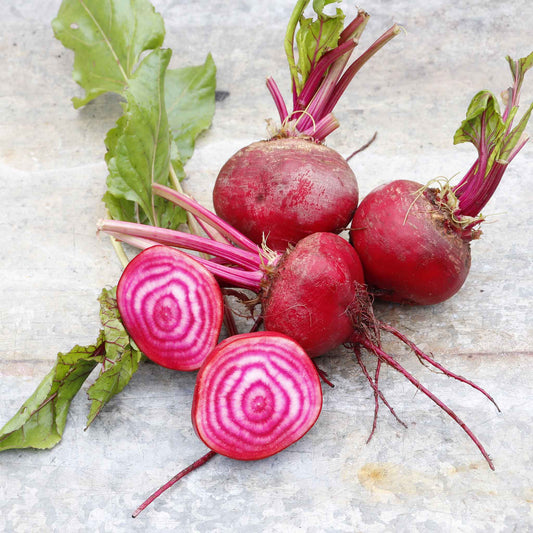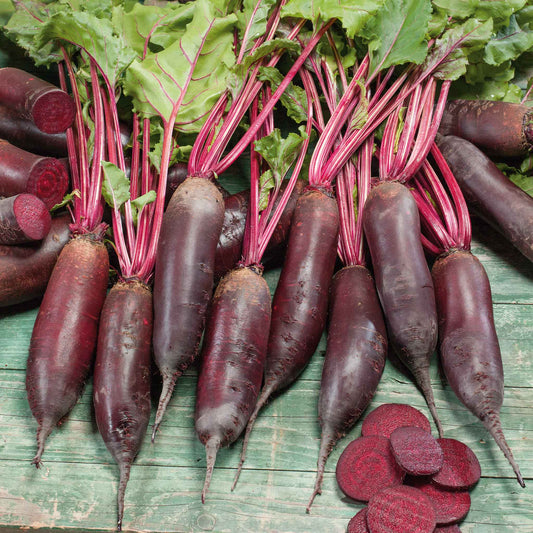-
main-collection-product-grid

Beet Seeds - Rainbow Mix
Give any dish a pop of color with this rainbowBeet Seeds - Rainbow Mix
Give any dish a pop of color with this rainbowRegular price As Low As $4.99Regular priceUnit price per -
main-collection-product-grid

Beet Seeds - Detroit Dark Red
Tasty and sweet all-purpose heirloom beetBeet Seeds - Detroit Dark Red
Tasty and sweet all-purpose heirloom beetRegular price As Low As $4.99Regular priceUnit price per -
main-collection-product-grid

Beet Seeds (Organic) - Detroit Dark Red
Home gardeners' top choice for beetsBeet Seeds (Organic) - Detroit Dark Red
Home gardeners' top choice for beetsRegular price As Low As $6.99Regular priceUnit price per -
main-collection-product-grid

Beet Seeds - Ruby Queen
Super tender beet with a buttery textureBeet Seeds - Ruby Queen
Super tender beet with a buttery textureRegular price As Low As $4.99Regular priceUnit price per -
main-collection-product-grid

Beet Seeds - Early Wonder
Very versatile beet that is an abundant producerBeet Seeds - Early Wonder
Very versatile beet that is an abundant producerRegular price As Low As $4.99Regular priceUnit price per -
main-collection-product-grid

Beet Seeds - Bulls Blood
An old favorite with a deep color that's great for saladsBeet Seeds - Bulls Blood
An old favorite with a deep color that's great for saladsRegular price As Low As $4.99Regular priceUnit price per -
main-collection-product-grid

Beet Seeds - Lutz Green Leaf
Large six-inch garnet colored beets with tasty green leavesBeet Seeds - Lutz Green Leaf
Large six-inch garnet colored beets with tasty green leavesRegular price As Low As $4.99Regular priceUnit price per -
main-collection-product-grid

Beet Seeds - Chioggia
Globe-shaped roots with a pale red skin and very attractive pale inside colorBeet Seeds - Chioggia
Globe-shaped roots with a pale red skin and very attractive pale inside colorRegular price As Low As $4.99Regular priceUnit price per -
main-collection-product-grid

Sugar Beet Seeds
Best natural choice when making your own sugarOut of StockSugar Beet Seeds
Best natural choice when making your own sugarRegular price As Low As $4.99Regular priceUnit price per -
main-collection-product-grid

Beet Seeds - Cylindra
Great slicing beet that is tender and sweetOut of StockBeet Seeds - Cylindra
Great slicing beet that is tender and sweetRegular price As Low As $4.99Regular priceUnit price per -
main-collection-product-grid

Beet Seeds - Crosby Egyptian
The perfect beet for picklingOut of StockBeet Seeds - Crosby Egyptian
The perfect beet for picklingRegular price As Low As $4.99Regular priceUnit price per
Growing heirloom beets in your garden
- Leaves and roots of beets are packed with nutrition
- Cool season vegetables that can survive frost and almost freezing temperatures
- Benefit from both the roots and the greens
- Prefers full sun
Choose from the best selection of Heirloom Beets
Beetroot, often known as "beets" in North America, are completely edible vegetables that can be eaten from the roots to the leaves. Heirloom beets have a long history of popularity. They were domesticated in the ancient Middle East, and Ancient Egyptians, Romans, and Greeks grew them. Beetroot has been used as a remedy for a variety of digestive and blood disorders since the Middle Ages. Beetroot is also used as a natural dye because of the strong stain it leaves. In the nineteenth century, it was also used to tint wine.
Cooking with heirloom beets
Heirloom beets can be prepared in a number of different ways. Beets are commonly prepared via boiling, roasting, steaming, and even juicing. Borscht, a beet soup, is highly popular in Eastern Europe. Burachky is a meal made from beets and horseradish that is commonly served in sandwiches or with meat and potatoes in Ukraine and Poland. Spiced beet is a common side dish in Indian cuisine
Recommendations for growing heirloom beets
There are a few things to keep in mind while planting heirloom beets in your garden to ensure success. Beets should not be planted in close proximity to Swiss chard or spinach because they are related. To keep competition at bay, keep plots well-weeded. Another factor to consider while choosing a place is that beets tolerate low fertility soil well. In fact, too much nitrogen might promote top growth at the expense of root development.
Plantings should be spaced about three weeks apart for a continuous harvest. Plant seeds 3/4 inch deep and one inch apart in rows that are 12 to 18 inches apart. Seedlings may need to be thinned once germination is complete and seedlings are roughly four to five inches tall. Thin small, cylindrical roots to three to four inches apart for early harvesting. Thin to six inches or more in spacing if you want longer roots and a later crop. Beets acquire their best flavor and color when grown in cool, sunny circumstances. They're usually picked 65 days after planting, when they're between one and a half to two inches tall.
For more information about planting planting, growing, and caring for heirloom beets, see our Beet Seeds Planting Guide.










